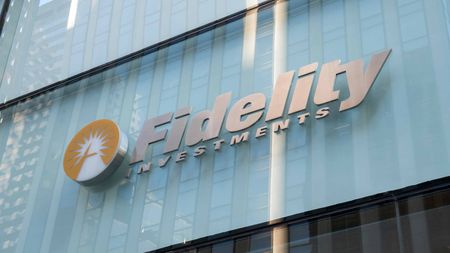4 Stock Picks from a Manager of a Kiplinger 25 Fund
The managers of Vanguard Selected Value fund find an eclectic mix of investing opportunities among midsize companies.
Many investors view the past ten years as a lost decade for the U.S. stock market. That’s certainly true for big-company stocks. During that period, Standard & Poor’s 500-stock index returned 1.0% annualized (through December 7). But it’s a different story as you go down the capitalization ladder. Stocks of midsize companies, in particular, have delivered impressive results. Over the past ten years, the S&P Midcap 400 index returned 7.2% annualized. Year-to-date, the mid-cap index has gained 23.8%, compared with 11.8% for the S&P 500.
Mark Giambrone, co-manager of Vanguard Selected Value (symbol VASVX), calls mid-cap stocks a “unique area of the market.” The companies are large enough to be past the stage at which investors have to worry about their survivability, but they’re small enough to achieve relatively high growth rates, often in attractive product or service niches. In addition, Giambrone says, most institutional investors buy small- or large-company stocks but often ignore those of midsize companies, causing many of the stocks to be mispriced.
Selected Value, a member of the Kiplinger 25, uses several quantitative screens to populate its portfolio of undervalued mid-cap stocks. Giambrone and co-manager Jim Barrow, who together manage 75% of the fund’s assets (Donald Smith & Co. controls the rest), seek stocks trading at lower ratios of price to earnings and price to book value (assets minus liabilities) and with higher yields than comparable ratios in the mid-cap value index. They want firms that can generate faster growth than the overall market and boast higher free-cash-flow yields (free cash flow is earnings plus depreciation and other noncash charges, minus the capital expenditures needed to maintain the business; divide that by market capitalization and you get free-cash-flow yield).

Sign up for Kiplinger’s Free E-Newsletters
Profit and prosper with the best of expert advice on investing, taxes, retirement, personal finance and more - straight to your e-mail.
Profit and prosper with the best of expert advice - straight to your e-mail.
Giambrone and Barrow, who are based in Dallas, hold an eclectic portfolio. Giambrone says they purchased shares of Royal Caribbean Cruises (RCL), the number-two player in the cruise industry, because the vacations it provides are considered to be a good value and the cruise business continues to take share in the leisure market.
Selected Value’s largest holding at last word was Goodrich (GR), a large supplier of aerospace parts, such as wheels, seats and brakes. The world airline industry is rebounding, which means that more miles are being flown (half of Goodrich’s revenues are from after-market parts) and more planes are being ordered (half of part sales are for new planes).
Advance Auto Parts (AAP) is “not about a robust economy,” Giambrone says. He likes the stock because the longer people hang on to their cars, the more maintenance they need and the greater the demand for parts (many of which carry high profit margins), sold in Advance’s retail outlets. Family Dollar Stores (FDO), which Giambrone calls a “mini Wal-Mart,” is another play on consumer frugality. The stock has rocketed 85% this year.
Year-to-date Selected Value is up 16.3%, trailing the S&P Midcap index by seven percentage points. But over the long haul, the fund has been a winner, returning 9% annualized over the past ten years, trumping the index by an average of two points per year. The annual expense ratio is a modest 0.52%. With Barrow and Giambrone controlling the bulk of the fund’s assets, Selected Value is in the strong hands of investors with a nose for bargains.
Get Kiplinger Today newsletter — free
Profit and prosper with the best of Kiplinger's advice on investing, taxes, retirement, personal finance and much more. Delivered daily. Enter your email in the box and click Sign Me Up.
Andrew Tanzer is an editorial consultant and investment writer. After working as a journalist for 25 years at magazines that included Forbes and Kiplinger’s Personal Finance, he served as a senior research analyst and investment writer at a leading New York-based financial advisor. Andrew currently writes for several large hedge and mutual funds, private wealth advisors, and a major bank. He earned a BA in East Asian Studies from Wesleyan University, an MS in Journalism from the Columbia Graduate School of Journalism, and holds both CFA and CFP® designations.
-
 April RMD? Five Tax Strategies to Manage Your 2025 Income
April RMD? Five Tax Strategies to Manage Your 2025 IncomeTaxable Income The April 1, 2025, deadline for required minimum distributions (RMDs) is fast approaching for retirees who turned 73 in 2024.
By Kelley R. Taylor Last updated
-
 Rising AI Demand Stokes Undersea Investments
Rising AI Demand Stokes Undersea InvestmentsThe Kiplinger Letter As demand soars for AI, there’s a need to transport huge amounts of data across oceans. Tech giants have big plans for new submarine cables, including the longest ever.
By John Miley Published
-
 The Kiplinger 25: Our Favorite No-Load Mutual Funds
The Kiplinger 25: Our Favorite No-Load Mutual FundsThe Kiplinger 25 The Kiplinger 25 is a list of our top no-load mutual funds that have proven capable of weathering any storm.
By Nellie S. Huang Last updated
-
 The 5 Best Actively Managed Fidelity Funds to Buy Now
The 5 Best Actively Managed Fidelity Funds to Buy Nowmutual funds In a stock picker's market, it's sometimes best to leave the driving to the pros. These Fidelity funds provide investors solid active management at low costs.
By Kent Thune Last updated
-
 The 12 Best Bear Market ETFs to Buy Now
The 12 Best Bear Market ETFs to Buy NowETFs Investors who are fearful about the more uncertainty in the new year can find plenty of protection among these bear market ETFs.
By Kyle Woodley Published
-
 Don't Give Up on the Eurozone
Don't Give Up on the Eurozonemutual funds As Europe’s economy (and stock markets) wobble, Janus Henderson European Focus Fund (HFETX) keeps its footing with a focus on large Europe-based multinationals.
By Rivan V. Stinson Published
-
 Vanguard Global ESG Select Stock Profits from ESG Leaders
Vanguard Global ESG Select Stock Profits from ESG Leadersmutual funds Vanguard Global ESG Select Stock (VEIGX) favors firms with high standards for their businesses.
By Rivan V. Stinson Published
-
 Kip ETF 20: What's In, What's Out and Why
Kip ETF 20: What's In, What's Out and WhyKip ETF 20 The broad market has taken a major hit so far in 2022, sparking some tactical changes to Kiplinger's lineup of the best low-cost ETFs.
By Nellie S. Huang Published
-
 ETFs Are Now Mainstream. Here's Why They're So Appealing.
ETFs Are Now Mainstream. Here's Why They're So Appealing.Investing for Income ETFs offer investors broad diversification to their portfolios and at low costs to boot.
By Nellie S. Huang Published
-
 Do You Have Gun Stocks in Your Funds?
Do You Have Gun Stocks in Your Funds?ESG Investors looking to make changes amid gun violence can easily divest from gun stocks ... though it's trickier if they own them through funds.
By Ellen Kennedy Published